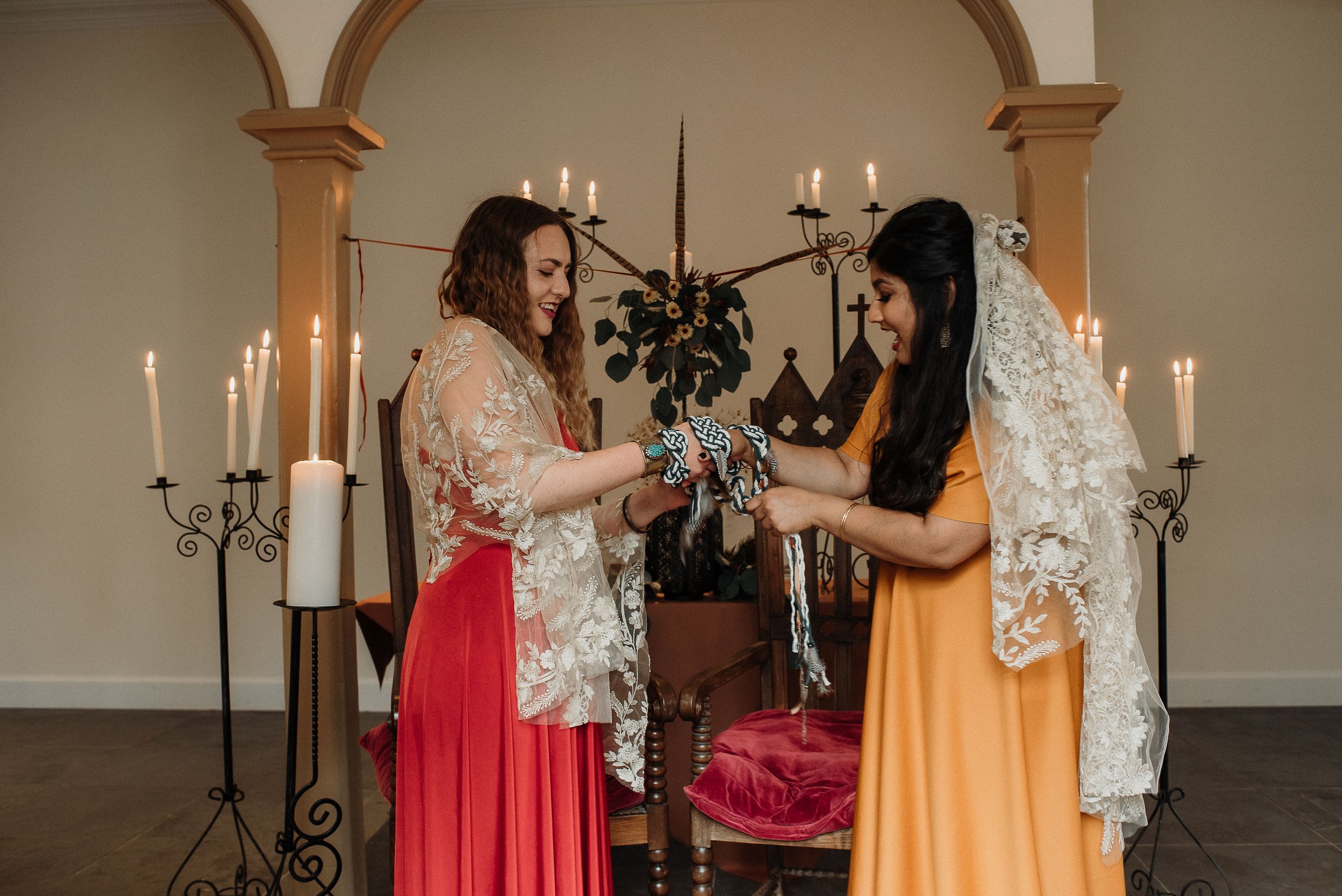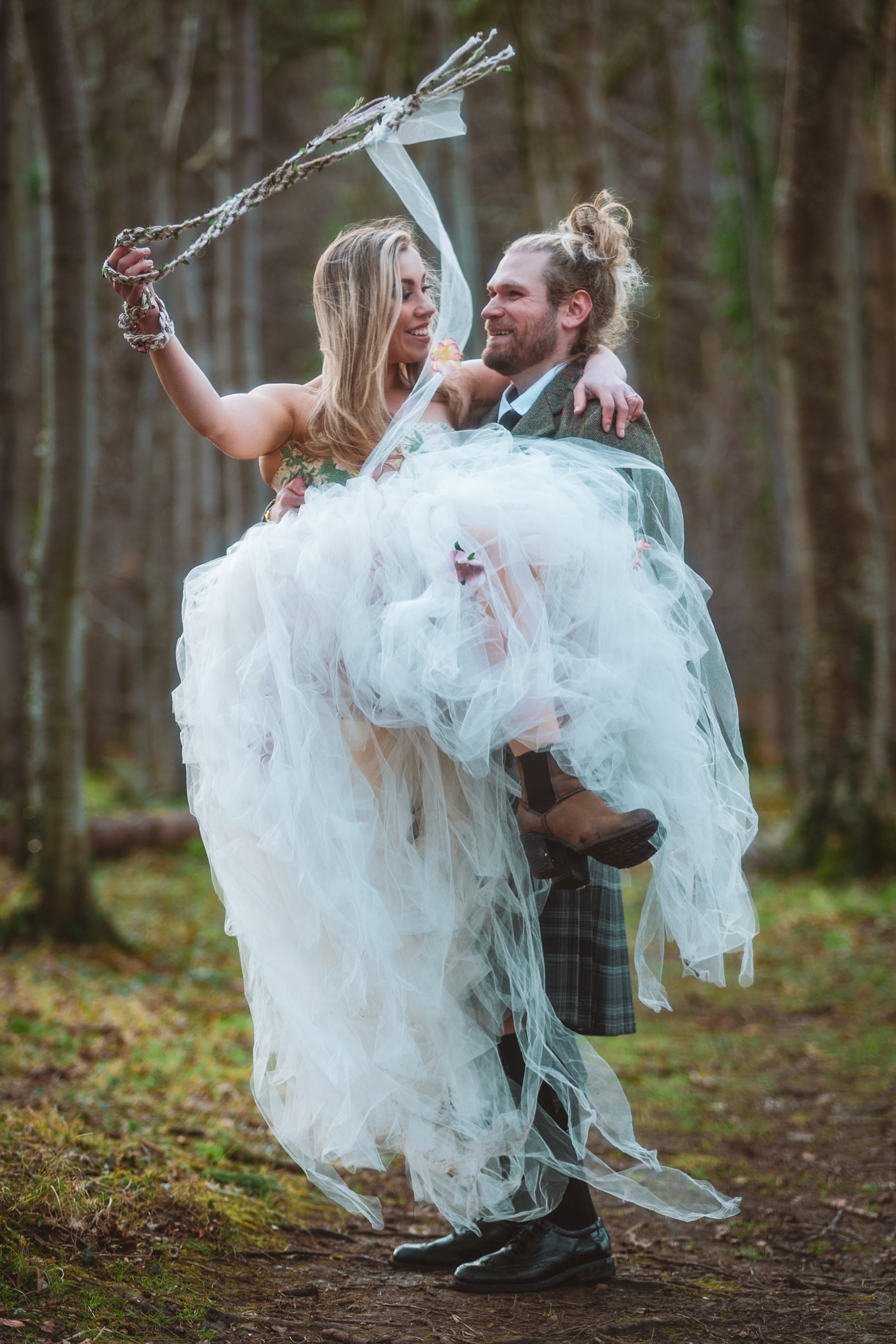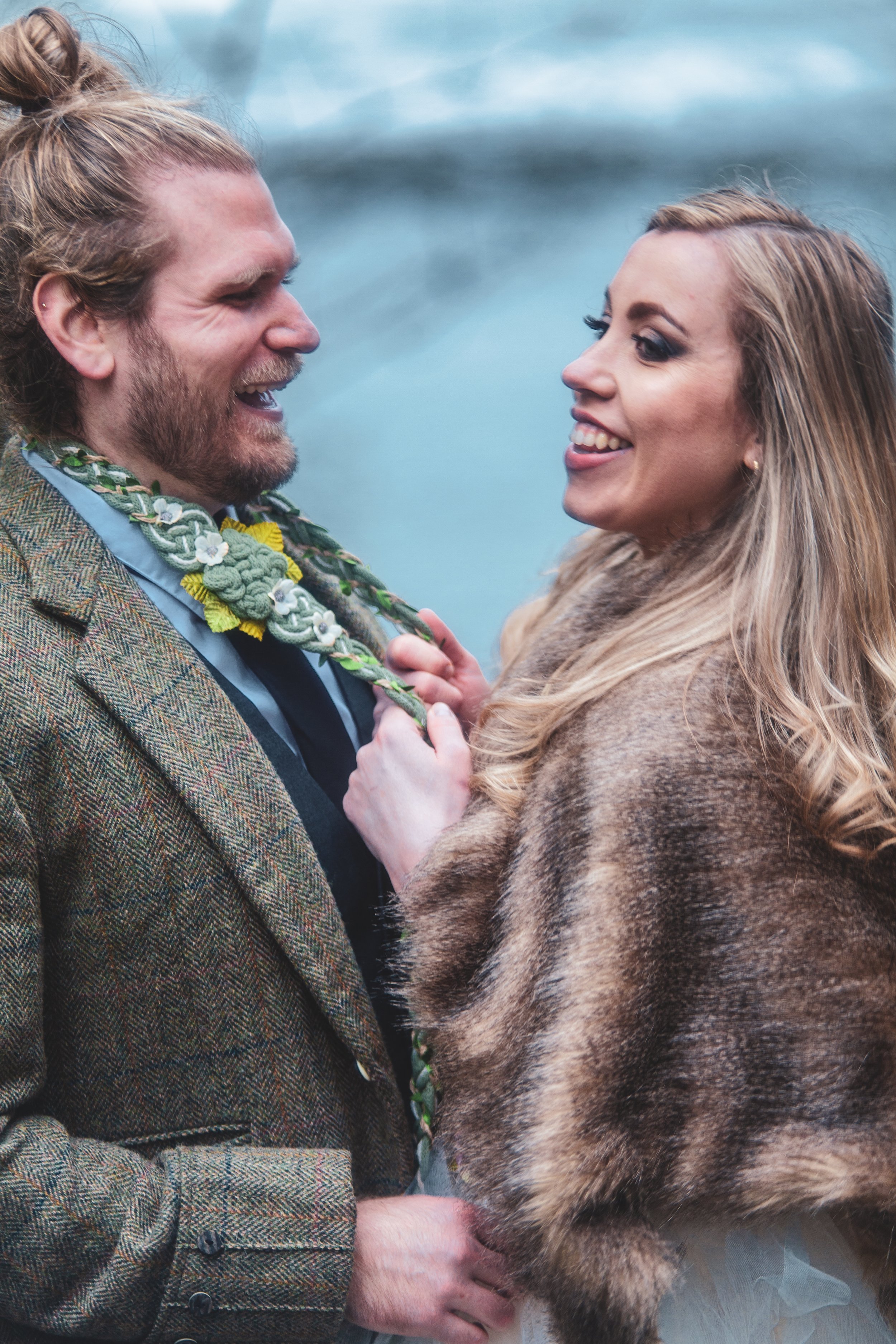Who can have a handfasting?
My Treasure handfasting cord in green and cream has a loose section in the middle, allowing you to tie the final knot as you please. Styled by Ceotha Muirhead at Culzean Castle, photographed by Andrea Costa
“In love, one and one are one.”
I get a lot of questions about what a handfasting ceremony looks like, so as part of my FAQ series I would like to set out some ideas that may inspire you. As always, I will begin with a disclaimer: handfasting as a tradition is very old – so old in fact that we don’t know exactly when it originated or where it came from. What we DO know is that there are traces of it all over the world. What this means is that there is no linear handfasting tradition with strict ‘dos’ and ‘donts’ to adhere to and this goes for any elements of the ceremony.
The cords I make are all inspired by the aesthetics and meaning of Celtic knots. One of the things I love most about Celtic culture is that the way meaning is created is never black and white but fluid and contextual. And this is exactly what I believe the most important rule is when it comes to the details of your handfasting ceremony: what matters most is what is meaningful to YOU and the story of your relationship. There will be some elements that remain constant: all stories have a setting, a beginning, a middle, and an end. But what these look like is different for everyone. Handfasting cords allow us to create a ritual of love that is special and unique to our relationship. If you are not sure about what to include, just listen to your heart. It’s your ceremony and your handfasting cord, after all. With that in mind, this post can hopefully give you some ideas.
This is one of many stunning Nine Knot styles available through my Etsy shop. Styled by Ceotha Muirhead at Abercairny House, photographed by Kate Haag Photography
Is handfasting a closed practice?
I sometimes receive questions about whether handfasting is a closed practice - meaning, is it something that you should not participate in unless you belong to a community associated with this tradition? And is it possible for having a marriage ceremony involving a handfasting to equal cultural appropriation?
These are good, conscientious questions, and I think it is really important to do due diligence around these issues before committing to a practice - any practice - that you may not be fully familiar with. There are many examples of wedding rituals that are closely associated with particular religious and cultural traditions - the breaking of the glass at a Jewish wedding is intimately interwound with religious and cultural history; while in Greek Orthodox weddings the lighting of candles (which we might consider a very neutral act in itself) represents a relationship with the Christian God. These rituals have meaning in their particular context, making it inappropriate to remove them from it simply for an aesthetic.
But, happily, the answer when it comes to handfasting is that anyone can do it! It isn’t cultural appropriation for (e.g.) non-pagans, or non-Scots, or anyone belonging to any group you can think of to incorporate elements of this wonderfully open, flexible practice into their special day.
Jumping the broom with a Magdalene knot cord in cream, gold and pale blue. Styled by Ceotha Muirhead at Abercairny House, photographed by Kate Haag Photography
The many meanings of handfasting
This is obviously not because handfasting is devoid of meaning - on the contrary, it has been meaningful to many different peoples through the centuries. While it is a tradition originating from the British Isles, and rooted in Celtic culture, it is now practiced all over the world and in all kinds of ceremonies.
Handfasting is the opposite of a closed practice - it is intended to serve as a symbol of your bond no matter what the circumstances. Historically it has been used as both a trial marriage and a way of tying two people together beyond this life; it can be part of a Wiccan ceremony or a traditional wedding; an elopement in a registry office or a forest; can be paired with jumping the broom or the lighting of a Unity candle.
This Wild Seven cord with feathers is one of many designs that incorporates charms and natural materials as accents. Styled by Ceotha Muirhead at Abercairny House, photographed by Kate Haag Photography
Don’t forget to have fun! This dazzling Fae Garden Rose Gold cord is the perfect mix of playful and elegant. Styled by Ceotha Muirhead at Culzean Castle, photographed by Andrea Costa
It is not religious, but its core message of the joining of partners can sit happily within many religious traditions. Spiritual elements, memories, and beliefs can be incorporated through the colours of the handfasting cord, the use of details such as flowers and charms, types of knot, and the decision to involve other people in designing or tying the cord. And while it should hopefully be grounded in respect for the tradition and your beloved, there’s nothing wrong with a certain amount of playfulness and whimsy!
I hope you have found this post helpful. If you would like to work with me on designing your own custom handfasting cord, please don’t hesitate to get in touch :)
This green Bloom cord, made from sustainable cotton, is simple, stunning and timeless. Styled by Ceotha Muirhead at Culzean Castle, photographed by Andrea Costa
Love,
Ceo





